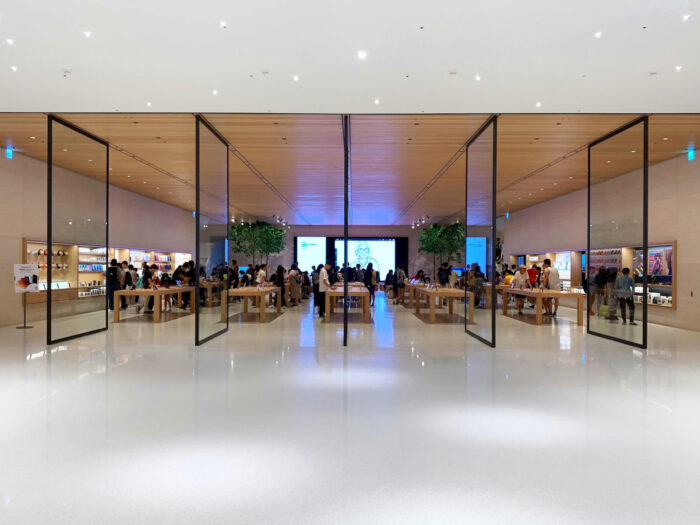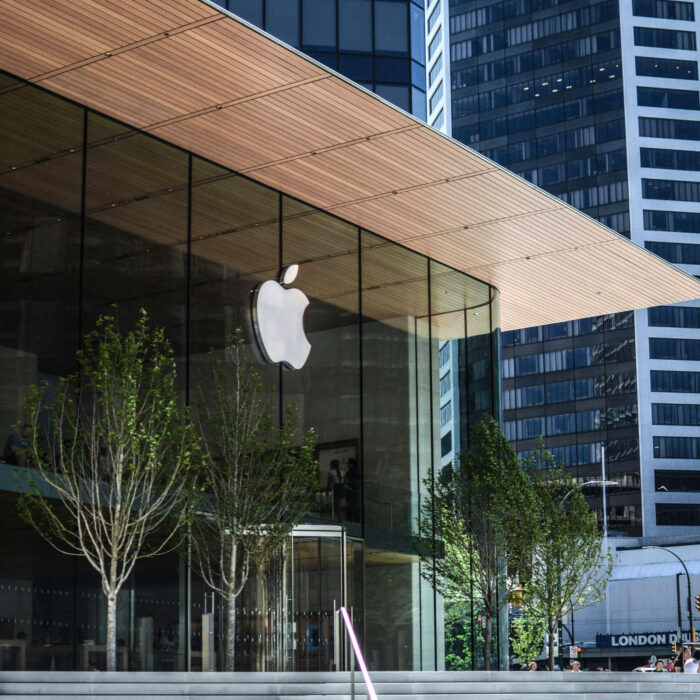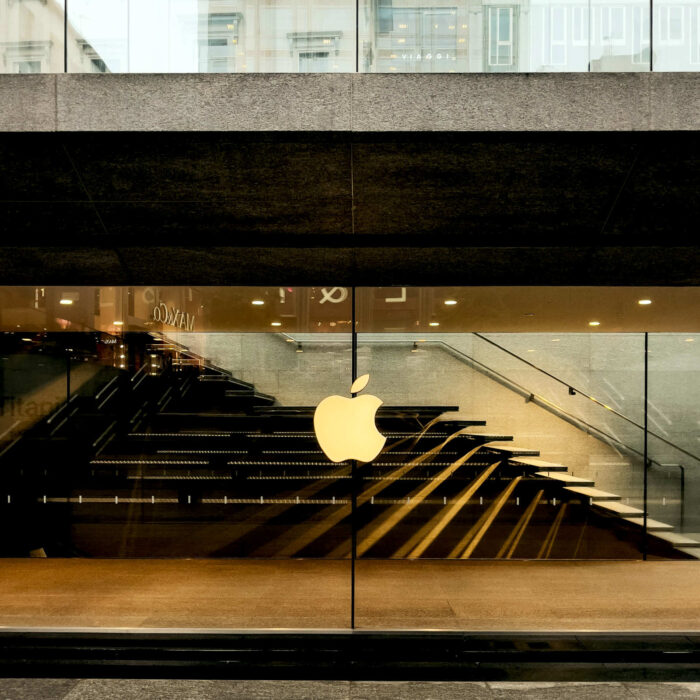
Apple’s generic competitive strategies and intensive growth strategies shape the business. Noting Michael E. Porter’s generic strategies and Igor Ansoff’s growth strategies, Apple aims for competitive advantages and growth as a provider of IT, consumer electronics, and online services.
Apple’s generic competitive strategy aligns with the company’s intensive growth strategies to maximize competitive advantages. These growth strategies uphold the company’s competitive strategy for long-term growth and success in providing technology and online services.
With such an alignment, the generic competitive strategy and intensive growth strategies synergistically reach for the goals of Apple’s mission statement and vision statement for excellence in the global industry.
Apple’s Competitive Strategy (Porter’s Model)
Apple’s generic competitive strategy is differentiation. This generic strategy focuses on competitive advantages that differentiate or set the company and its products apart from competitors, including IT and consumer electronics companies.
For example, elegant design, user-friendliness, and high-end branding help differentiate Apple’s business and products. The company’s patents and related legal protection contribute to the strength of these differentiating factors.
With differentiation as its generic competitive strategy, Apple uses its competitive advantages to address IT and consumer electronics competitors, like Samsung, Google (Alphabet), Microsoft, and Sony. These competitive advantages also apply to Apple TV Plus, which competes with the video-streaming services of Netflix, Disney, Amazon, and Facebook (Meta).
The generic competitive strategy of differentiation means that Apple always aims to set itself apart from competitors not by competitive pricing. Instead, the company’s competitive advantages are based on product design that attracts customers to the iPhone, iPad, MacBook, and other products. Apple’s design strategy includes seamless connectivity among devices and cutting-edge aesthetics.
Even though this generic competitive strategy makes Apple different, the company still broadly reaches various segments of the market. The firm’s products are designed for everyone, thereby supporting a broad market reach.
For example, Apple offers various iPhones, iPads, and MacBooks that have different technical specifications and price points that suit the needs and preferences of organizations and individual customers.
In this way, the generic competitive strategy of differentiation supports Apple in maintaining its competitive advantages and position as a high-end and high-value technology business targeting the global market.
Differentiation has significant implications on Apple’s strategic objectives. For example, to apply this generic competitive strategy, the company prioritizes technological innovation through research and development. Apple must keep developing innovative products so that the business maintains its competitive advantages.
Competitors eventually catch up with new technologies and new products, so the generic competitive strategy of differentiation compels Apple to continuously innovate to keep itself ahead of the competition. Thus, continuous innovation is one of Apple’s strategic objectives based on differentiation as a generic competitive strategy.

To maintain business growth, Apple increases its market reach for selling goods and services that suit market demand for information technology, consumer electronics, and digital/online services.
Thus, applying its generic competitive strategy, Apple has the strategic objective of further penetrating all markets. This market penetration and related business growth are achieved with support from the company’s intensive growth strategies.
Apple’s Growth Strategies (Ansoff Matrix)
Product Development. Apple uses product development as its main intensive strategy for growth. Product development requires new and profitable products to grow the company’s market share and business performance.
Apple implements this intensive growth strategy through technological and design innovation. The company’s research and development activities focus on advanced technologies to create competitive advantages for iPhones, MacBooks, iPads, and other products.
In this case, innovation is a critical success factor for competitive advantages. For example, the company innovates and enhances MacBooks and the iPhone, iPad, and Apple Watch. With this intensive growth strategy, the company grows because new products allow the business to generate more revenues and retain more users of the Apple ecosystem of devices and services.
The generic strategy of differentiation agrees with this growth strategy of product development in terms of focus on technological innovation for competitive advantages. Apple’s organizational structure (corporate structure) supports product development as a growth strategy.
For example, the company structure’s product-based divisions enable strategic management specific to product development. Also, Apple’s company culture (business culture) emphasizes innovation that supports product development as a growth strategy.
Market Penetration. Apple Inc. uses market penetration as another intensive strategy for growth. Market penetration involves gaining a larger share of the current market by selling more of the company’s current products. For example, Apple implements this growth strategy by selling more iPhones and iPads to its current markets in North America.
Also, Apple achieves more sales by adding more authorized resellers to boost its distribution network’s competitive advantages in its current markets. This approach further penetrates markets where the company has not yet achieved a significant position.
The distribution strategy and promotional strategies and tactics in Apple’s marketing mix (4P) influence the effectiveness of the organization’s competitive advantages and this intensive growth strategy of market penetration. For example, the company uses promotion through various websites and media outlets. Advertisements encourage more people to buy Apple products.
This intensive growth strategy of market penetration is reinforced through Apple’s generic competitive strategy of differentiation. The company’s differentiation sets competitive advantages for broadly capturing the market for the sale of more technological products to more customers.

Market Development. Apple uses market development as a low-priority growth strategy. Using the company’s competitive advantages, market development involves selling existing products in new markets or market segments.
This growth strategy of market development is supported through the generic competitive strategy of differentiation in terms of competitive advantages for expanding Apple’s market reach, such as in introducing the company’s current consumer electronics to new market segments.
Also, the business strengths discussed in the SWOT analysis of Apple Inc. facilitate the implementation of market development as a growth strategy. For example, the high-value brand strengthens the company’s products in new markets or market segments.
Notes on Apple’s Competitive and Growth Strategies
Apple’s generic competitive strategy of differentiation leads to competitive advantages that make the business stand out. Differentiation in product function and design supports the firm’s goal of leading the market through technological innovation. Innovation is at the heart of Apple’s business.
Apple’s main intensive growth strategy is product development. Market penetration and market development have lower priority in this technology enterprise. These intensive growth strategies agree with and support Apple’s generic competitive strategy. The company is strong in product development through innovation.
To maximize the benefits of its generic competitive strategy, Apple must aggressively penetrate markets. A recommendation for Apple would be to further penetrate high-growth developing countries where the company has a limited market reach or presence for its information technology goods and services.
More intensive market penetration and market development can improve the company’s resilience against aggressive competitors, like Samsung. These growth strategies can increase Apple’s market share and revenues globally.
Also, adjustments to Apple’s operations management optimize the effectiveness of these growth strategies and the generic competitive strategy of differentiation. This optimization can improve the supply chain to reinforce the business as it competes and grows in the global market for IT and consumer electronics.
References
- Adama, H. E., Popoola, O. A., Okeke, C. D., & Akinoso, A. E. (2024). Theoretical frameworks supporting IT and business strategy alignment for sustained competitive advantage. International Journal of Management & Entrepreneurship Research, 6(4), 1273-1287.
- Apple Developer – Design – Human Interface Guidelines.
- Apple Inc. Form 10-K.
- Apple Store Online.
- Chen, Z. (2024, September). Business Strategy Analysis: Evidence on Apple Inc. In Proceedings of the 2024 4th International Conference on Enterprise Management and Economic Development (ICEMED 2024) (p. 104). Springer Nature.
- Parmentier, G., & Gandia, R. (2025). Strategy and Business Models in the Digital Age. Edward Elgar Publishing.
- Parnell, J. A. (2024). Authenticity matters: A nonmarket perspective on the competitive strategy-firm performance nexus. Management Decision, 62(12), 4068-4094.
- U.S. Department of Commerce – International Trade Administration – Software and Information Technology Industry.